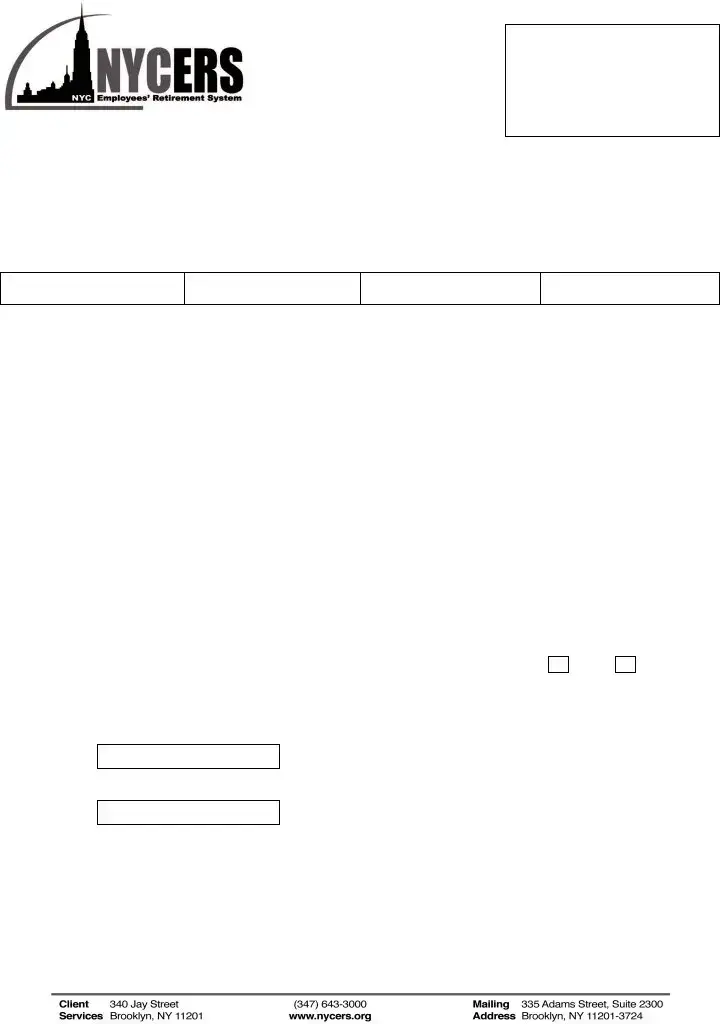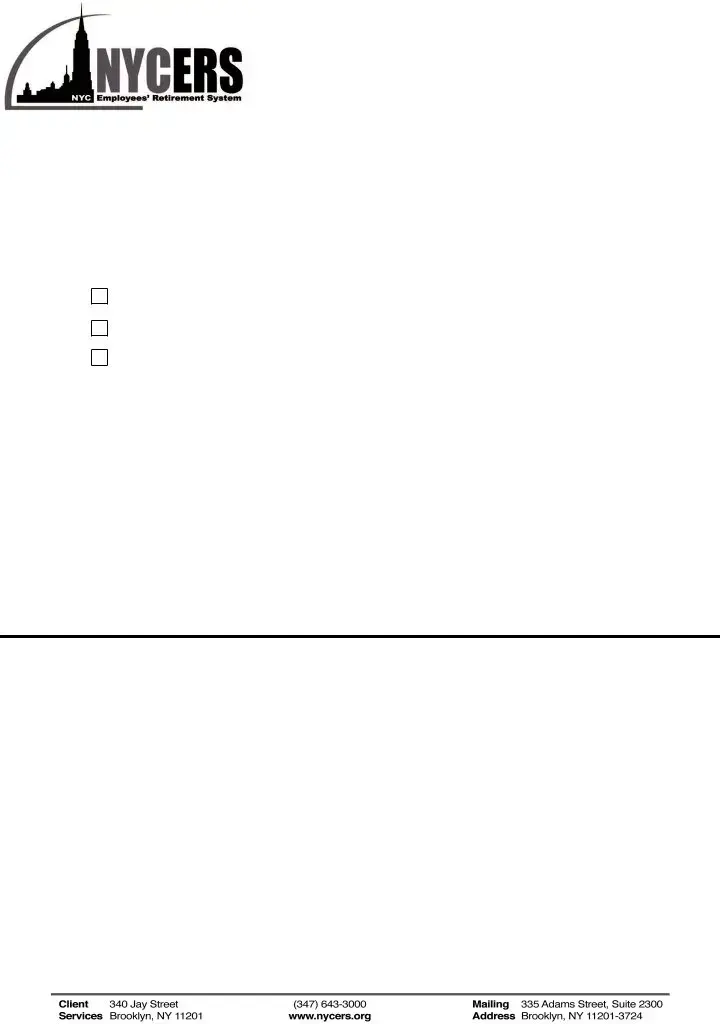The IRS Form 1040, the U.S. Individual Income Tax Return, shares similarities with the NYCERS F351 form in its function of reporting income. While the IRS Form 1040 encompasses a broader scope, requiring details on all taxable income for the year, the F351 specifically targets disability retirees to affirm their eligibility for benefits by disclosing personal service income. Both documents necessitate accuracy and honesty, with severe penalties for misrepresentation. Furthermore, the requirement to attach supporting W-2 forms for verification parallels the F351’s stipulation for accompanying tax returns and W-2s to validate reported earnings.
Form SSA-1099, the Social Security Benefit Statement, serves a different purpose but is connected in concept to the F351 form. This document outlines the Social Security benefits received, which are excluded from personal service income on the F351. SSA-1099 highlights government-provided income, whereas the F351 form allows disability retirees to report earned income, distinguishing between public and private sector earnings. Both forms contribute to the overall financial assessment of individuals, ensuring correct benefit and tax calculations.
The W-2 Form, the Wage and Tax Statement, directly correlates with information required in the F351 form. It presents a detailed account of an employee's annual wages and taxes withheld, similar to how the F351 gathers information on personal service income. Recipients use the W-2 to report their income, fitting into the F351's structure by providing evidence of earned income outside of excluded categories. This verification aids NYCERS in determining the accuracy of the income reported and the rightful eligibility for disability benefits.
The SSDI (Social Security Disability Insurance) Benefits form also bears resemblance to the NYCers F351 form in its aim to assess eligibility for benefits based on income. However, the SSDI form's focus is on determining eligibility for federal disability benefits by evaluating one's inability to work due to a medical condition. The linkage comes through the scrutiny of income and its impact on benefit eligibility, a core concern of both documents, although they pertain to different systems of benefits—the former to federal disability insurance, and the latter to city retirement benefits.
The 1099-MISC form, used to report miscellaneous income, extends the reporting scope beyond traditional employment wages, encompassing freelancing, contracting, or other non-employee compensation. This form's relevance to the F351 comes into play when individuals receiving disability retirement benefits from NYCERS earn money outside the realms of regular employment that must be reported. Both documents serve to ensure a comprehensive income reporting, ensuring that benefits are allocated based on accurate financial pictures.
The Unemployment Compensation Benefit Notice parallels the F351's efforts to report and assess income. This notice details the amount of unemployment benefits received, which, similarly to certain incomes reported on the F351, may affect the eligibility for other financial benefits. While the F351 form focuses on earned income during retirement for disability, both documents address the need to report income changes that could impact financial support levels from government or public entities.
Pension Benefit Statements from private or other public sector pensions offer a reporting mechanism comparable to the F351 form. These statements detail the income retirees receive from their pension plans, aiding in their financial planning. The correlation to the F351 form arises from the shared goal of providing a clear understanding of retirement incomes which, albeit from different sources, contribute to the overall financial status of a retiree. Both necessitate full disclosure of income sources to maintain transparency and accuracy in benefits allocation.
Lastly, the Worker's Compensation Benefit Verification form is somewhat analogous to the F351, as both involve reporting income that could affect eligibility for benefits. Worker's Compensation benefits, explicitly excluded from the F351's reportable income, represent another form of support for individuals unable to work due to injury. The requirement to report such incomes or, in the case of the F351, specifically exclude them, underscores the comprehensive effort to gauge financial status accurately, ensuring fair and appropriate distribution of benefits based on total income.

